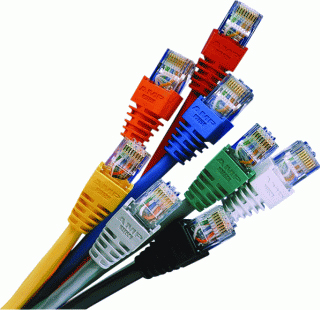By: John Shepler
Don’t let bandwidth restrictions hinder your business growth. There are two budget-friendly ways to obtain 100 Mbps Fast Ethernet service, which is typically sufficient for small to medium-sized businesses. We’ll discuss upgrading to Gigabit Ethernet later.
The leading business bandwidth solution has transitioned from traditional T1 lines to fiber optic service. We’re not referring to the outdated and expensive SONET telco fiber known as OC-3, OC-12, or OC-48, but rather the contemporary Carrier Ethernet standard called Ethernet over Fiber, or Metro Ethernet.
Typically, entry-level fiber service starts at 10 Mbps, which is adequate for small businesses with minimal internet or file transfer requirements. However, with even a few employees or extensive use of cloud-based applications, you’ll likely need more bandwidth. This is where Fast Ethernet excels, delivering a consistent 100 Mbps x 100 Mbps dedicated bandwidth.
Features of Fast Ethernet over Fiber
The performance is comparable to your previous T1 line or DS3 connection, but significantly faster. Symmetrical bandwidth ensures both upload and download speeds of 100 Mbps, which is crucial for cloud applications that involve large file transfers in both directions. Uploads are particularly important for cloud storage backups until you need to retrieve a file.
Fiber optic bandwidth is known for its minimal latency, packet loss, and jitter. Your service will be dependable as the entire line bandwidth is dedicated solely to your business. Unused capacity remains idle, similar to a Local Area Network.
This highlights another key benefit of Fast Ethernet over Fiber: its direct compatibility with your LAN. Simply connect it to your router or switch for immediate use. Many business networks operate at 100 Mbps, while newer installations typically use 1000 Mbps, and larger networks utilize 10,000 Mbps or 10 GigE.
Option #2 Fast Ethernet over Cable
Business Cable Broadband has advanced considerably. Most systems are HFC or Hybrid Fiber Cable, utilizing a dedicated fiber optic network for long-distance connections. Conventional 75-ohm coaxial copper cable links the curb to your building, terminating in a DOCSIS modem. The majority are DOCSIS 3.0, easily supporting 100 Mbps internet service with downloads up to 1.2 Gbps. The latest DOCSIS 3.1 standard readily provides Gigabit internet service and can scale up to 10 Gbps in both directions.
Characteristics of Fast Ethernet over Cable
Cable broadband offers two primary advantages: accessibility and affordability. Service is available wherever cable lines are present, which covers most metropolitan buildings. The cost of 100 Mbps Fast Ethernet is often a fraction of Ethernet over Fiber, with minimal to no installation expenses. Simply connect your network to the Ethernet port on the DOCSIS modem.
However, the price difference reflects a difference in service quality, though this may not be an issue depending on your usage. Cable bandwidth is shared, not dedicated, potentially leading to speed fluctuations based on the number of users and their online activity.
Cable bandwidth is asymmetrical, meaning downloads are significantly faster than uploads. A typical service offers 100 Mbps down and 10 Mbps to 25 Mbps up. Most internet usage, like web browsing and video streaming, relies heavily on downloads. While email utilizes both upload and download, the files are generally small and unaffected by the asymmetry. However, sending large mailings or hosting videos on your servers could strain the upload bandwidth.
Upgrading Bandwidth
Both fiber and cable services offer easy scalability compared to older T-Carrier and SONET telco standards. You only need a port that supports your maximum anticipated bandwidth. For fiber, this is a Gigabit Ethernet port on the Customer Premises Equipment, while cable requires a DOCSIS 3.0 or 3.1 modem. With these in place, upgrading your speed is as simple as making a phone call, with no equipment changes required.
Are you feeling restricted by your current point-to-point or internet speed? You might be surprised at the affordability of a significant upgrade. Explore Fast Ethernet service options for your business today.


